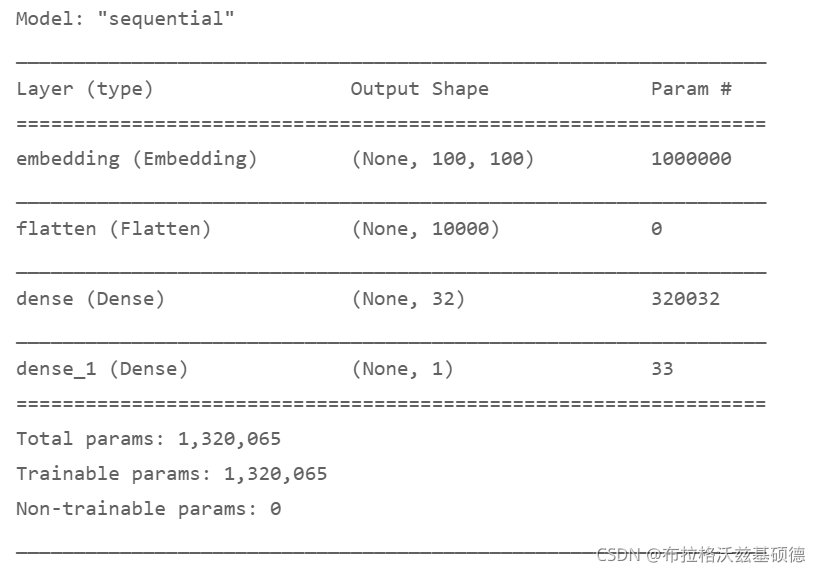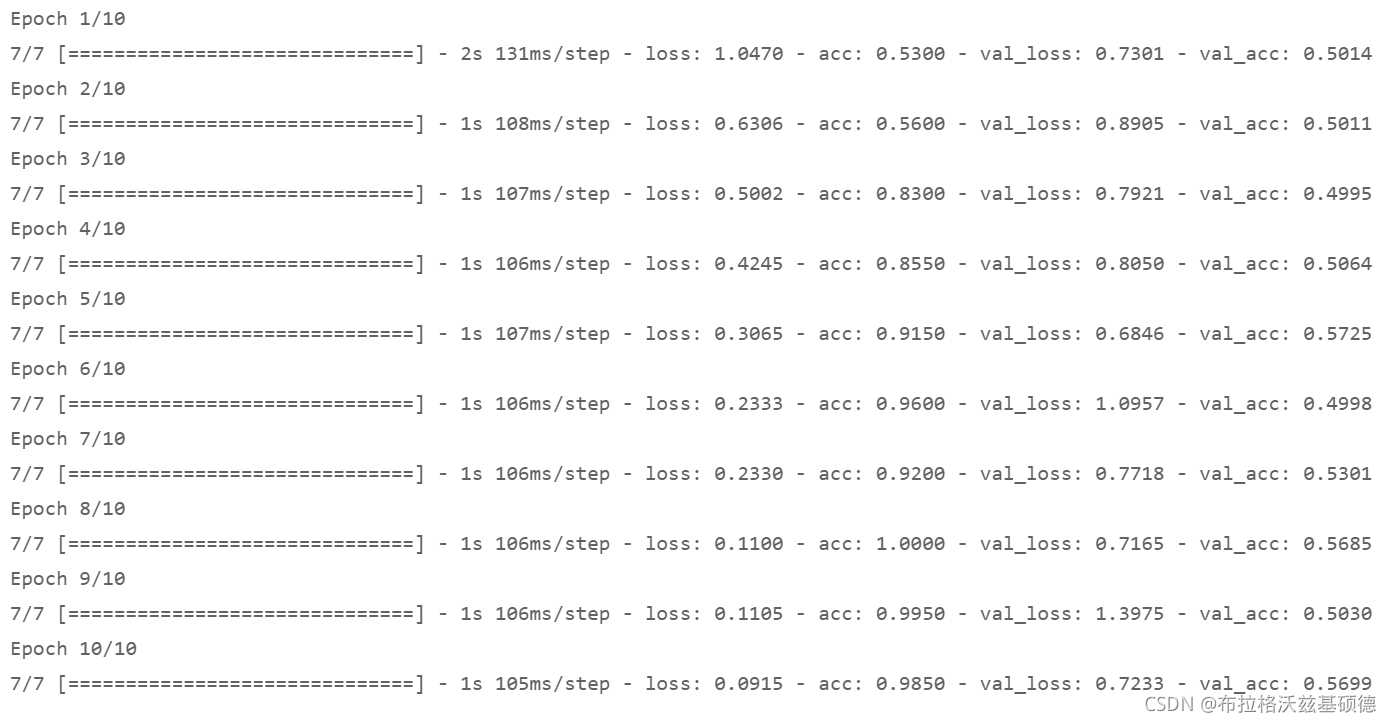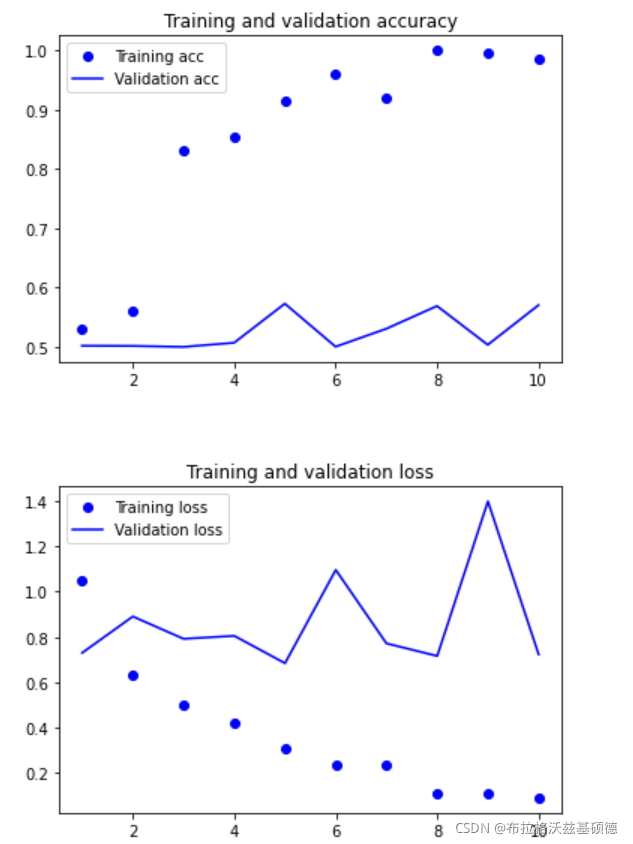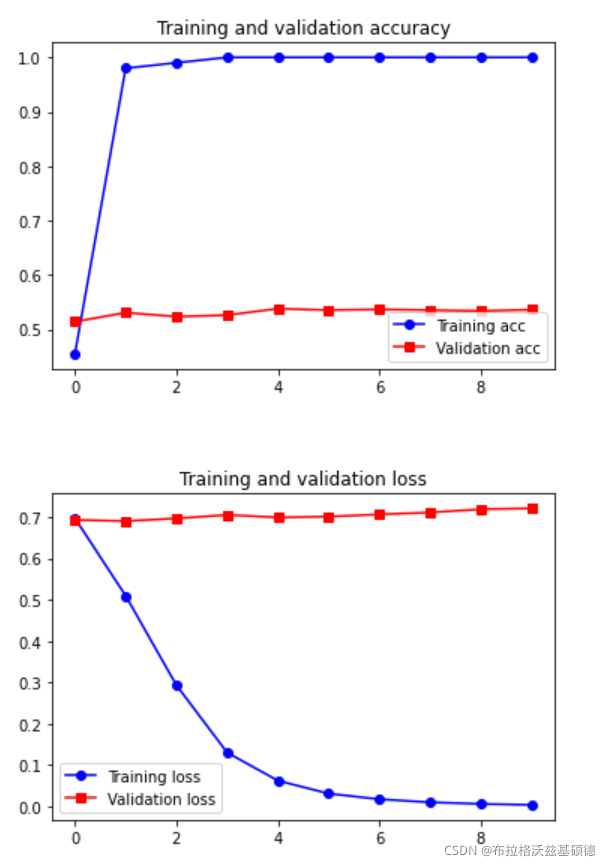1. 处理 IMDB 原始数据的标签
在每个 neg/pos 目录下面就是一大堆 .txt 文件了,每个里面是一条评论。
下面,我们将 train 评论转换成字符串列表,一个字符串一条评论,并把对应的标签(neg/pos)写到 labels 列表。
# 处理 IMDB 原始数据的标签
import os
imdb_dir = 'D:\\2022Thesis\\Deep Learning with Python\\Code\\aclImdb\\aclImdb'
train_dir = os.path.join(imdb_dir, 'train')
texts = []
labels = []
for label_type in ['neg', 'pos']:
dir_name = os.path.join(train_dir, label_type)
for fname in os.listdir(dir_name):
if fname.endswith('.txt'):
with open(os.path.join(dir_name, fname),encoding='utf-8') as f:
texts.append(f.read())
labels.append(0 if label_type == 'neg' else 1)
print(labels[0], texts[0], sep=' --> ')
print(labels[-1], texts[-1], sep=' --> ')
print(len(texts), len(labels))2. 对数据进行分词
现在来分词,顺便划分一下训练集和验证集。为了体验预训练词嵌入,我们再把训练集搞小一点,只留200条数据用来训练。?
# 对 IMDB 原始数据的文本进行分词
import numpy as np
from tensorflow.keras.preprocessing.text import Tokenizer
from tensorflow.keras.preprocessing.sequence import pad_sequences
maxlen = 100 # 只看每条评论的前100个词
training_samples = 200
validation_samples = 10000
max_words = 10000
tokenizer = Tokenizer(num_words=max_words)
tokenizer.fit_on_texts(texts)
sequences = tokenizer.texts_to_sequences(texts)
word_index = tokenizer.word_index
print(f'Found {len(word_index)} unique tokens.')
data = pad_sequences(sequences, maxlen=maxlen)
labels = np.asarray(labels)
print('Shape of data tensor:', data.shape)
print('Shape of label tensor:', labels.shape)
# 打乱数据
indices = np.arange(labels.shape[0])
np.random.shuffle(indices)
data = data[indices]
labels = labels[indices]
# 划分训练、验证集
x_train = data[:training_samples]
y_train = labels[:training_samples]
x_val = data[training_samples: training_samples + validation_samples]
y_val = labels[training_samples: training_samples + validation_samples]

?3. 下载 GloVe 词嵌入
下载预训练好的 GloVe 词嵌入: http://nlp.stanford.edu/data/glove.6B.zip
写下来把它解压,里面用纯文本保存了训练好的 400000 个 tokens 的 100 维词嵌入向量。
?4. 对嵌入进行预处理?
#解析GloVe词嵌入文件
glove_dir = 'D:/2022Thesis/Deep Learning with Python/code/glove.6B'
embeddings_index = {}
with open(os.path.join(glove_dir, 'glove.6B.100d.txt'), encoding='utf-8') as f:
for line in f:
values = line.split()
word = values[0]
coefs = np.asarray(values[1:], dtype='float32')
embeddings_index[word] = coefs
print(f'Found {len(embeddings_index)} word vectors.')
准备GloVe词嵌入矩阵?
然后,我们要构建一个可以加载进 Embedding 层的嵌入矩阵,其形状为 (max_words, embedding_dim)。
embedding_dim = 100
embedding_matrix = np.zeros((max_words, embedding_dim))
for word, i in word_index.items():
if i < max_words:
embedding_vector = embeddings_index.get(word) # 有的就用 embeddings_index 里的词向量
if embedding_vector is not None: # 没有就用全零
embedding_matrix[i] = embedding_vector
print(embedding_matrix) ?
?
5. 定义模型??
from tensorflow.keras.models import Sequential
from tensorflow.keras.layers import Embedding, Flatten, Dense
model = Sequential()
model.add(Embedding(max_words, embedding_dim, input_length=maxlen))
model.add(Flatten())
model.add(Dense(32, activation='relu'))
model.add(Dense(1, activation='sigmoid'))
model.summary()
?6. 把 GloVe 词嵌入加载进模型
model.layers[0].set_weights([embedding_matrix])
model.layers[0].trainable = False7.训练与评估模型?
model.compile(optimizer='rmsprop',
loss='binary_crossentropy',
metrics=['acc'])
history = model.fit(x_train, y_train,
epochs=10,
batch_size=32,
validation_data=(x_val, y_val))
model.save_weights('pre_trained_glove_model.h5')
 8. 绘制结果
8. 绘制结果
# 绘制结果
import matplotlib.pyplot as plt
acc = history.history['acc']
val_acc = history.history['val_acc']
loss = history.history['loss']
val_loss = history.history['val_loss']
epochs = range(1,len(acc)+1)
plt.plot(epochs, acc, 'bo', label='Training acc')
plt.plot(epochs, val_acc, 'b', label='Validation acc')
plt.title('Training and validation accuracy')
plt.legend()
plt.figure()
plt.plot(epochs, loss, 'bo', label='Training loss')
plt.plot(epochs, val_loss, 'b', label='Validation loss')
plt.title('Training and validation loss')
plt.legend()
plt.show()
?只用 200 个训练样本还是太难了,但用预训练词嵌入还是得到了不错的成果的。作为对比,看看如果不使用预训练,会是什么样的:
9. 在不使用预训练词嵌入的情况下,训练相同的模型:
# 构建模型
from tensorflow.keras.models import Sequential
from tensorflow.keras.layers import Embedding, Flatten, Dense
model = Sequential()
model.add(Embedding(max_words, embedding_dim, input_length=maxlen))
model.add(Flatten())
model.add(Dense(32, activation='relu'))
model.add(Dense(1, activation='sigmoid'))
model.summary()
# 不使用 GloVe 词嵌入
# 训练
model.compile(optimizer='rmsprop',
loss='binary_crossentropy',
metrics=['acc'])
history = model.fit(x_train, y_train,
epochs=10,
batch_size=32,
validation_data=(x_val, y_val))
# 绘制结果
import matplotlib.pyplot as plt
acc = history.history['acc']
val_acc = history.history['val_acc']
loss = history.history['loss']
val_loss = history.history['val_loss']
epochs = range(len(acc))
plt.plot(epochs, acc, 'bo-', label='Training acc')
plt.plot(epochs, val_acc, 'rs-', label='Validation acc')
plt.title('Training and validation accuracy')
plt.legend()
plt.figure()
plt.plot(epochs, loss, 'bo-', label='Training loss')
plt.plot(epochs, val_loss, 'rs-', label='Validation loss')
plt.title('Training and validation loss')
plt.legend()
plt.show()
 ?
?
?
10. 对测试集数据进行分词?
# 对测试集数据进行分词
test_dir = os.path.join(imdb_dir, 'test')
texts = []
labels = []
for label_type in ['neg', 'pos']:
dir_name = os.path.join(test_dir, label_type)
for fname in sorted(os.listdir(dir_name)):
if fname.endswith('.txt'):
with open(os.path.join(dir_name, fname), encoding='utf-8') as f:
texts.append(f.read())
labels.append(0 if label_type == 'neg' else 1)
sequences = tokenizer.texts_to_sequences(texts)
x_test = pad_sequences(sequences, maxlen=maxlen)
y_test = np.asarray(labels)
11.在测试集上评估模型?
model.load_weights('pre_trained_glove_model.h5')
model.evaluate(x_test, y_test)
?
?